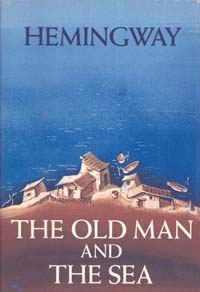Teaching a longer work of literature to teenagers comes with its challenges: avoiding spoilers, keeping students interested for weeks, and fearing that the students are running to the comfort of quick online summaries.
Experienced teachers and pedagogical experts have found ways around these issues, while other educators opt to stick with short stories and excerpts. One simple approach is to stick with shorter novels that are accessible yet packed with material for teaching. One novel I have had great success with is The Old Man and the Sea by Ernest Hemingway. From the accessibility of the text to the relatability of themes, I have used this novel with teenagers of different ages in various settings.
Accessibility
When picking up a hard copy of The Old Man and the Sea, I always find students to be surprised at how short it is. As a teacher, that’s a comforting reaction to see from reluctant novel-readers. The novel’s present time is only a few days and it takes place in Cuba and the sea nearby; but Santiago’s memories take the reader back to his childhood and young adulthood, to the coasts of Africa and Spain. It’s a vast setting full of ideas and themes as deep as the waters the great marlin swims in, yet the reader can access it in just a few readings.
The simplicity of vocabulary, sentence structure, and plot that Hemingway has become known for is a breath of fresh air for some students. Hemingway believed that “big emotions” do not need to come from big words. In The Old Man and the Sea, he holds to that simplicity. The simplicity also carries over to his short character list with main characters that are reduced to “the old man” and “the boy.”
 Yet, the complexity of his ‘iceberg’ is apparent as the thoughts, dreams, and struggles of Santiago–”the old man”–fill the pages. Still further, the character list grows as Santiago speaks to and personifies those around him: the fish, birds, stars, and the sea. These become characters and take the reader deeper into a theme that explores the relationship between humans and nature.
Yet, the complexity of his ‘iceberg’ is apparent as the thoughts, dreams, and struggles of Santiago–”the old man”–fill the pages. Still further, the character list grows as Santiago speaks to and personifies those around him: the fish, birds, stars, and the sea. These become characters and take the reader deeper into a theme that explores the relationship between humans and nature.
Section-by-Section Approach Made Easy
The novel doesn’t have any chapters–its brevity doesn’t require them. But section breaks allow for daily readings, discussions, and writings that are more manageable for the young reader. The novel is easily broken up into about five sections. Paired with daily writings, it makes for a great Monday-Friday assignment.
A week spent reading the novel is a comfortable amount of days to spend, but the lesson could go further on both ends. Before starting the novel, the teacher or parent can take advantage of the 20th century Cuban setting to explore connected history, geography, weather, professions, and cultures. After reading the novel, the short plot and the intense climax will be fresh on the reader’s mind, and reflection writings, a detailed summary, and an essay can follow the reading.
In the next post, I look into the accessible and relatable themes and symbols of Hemingway’s classic novel: “Teaching The Old Man and the Sea: Part Two.”
One thought on “Teaching The Old Man and the Sea: Part One”